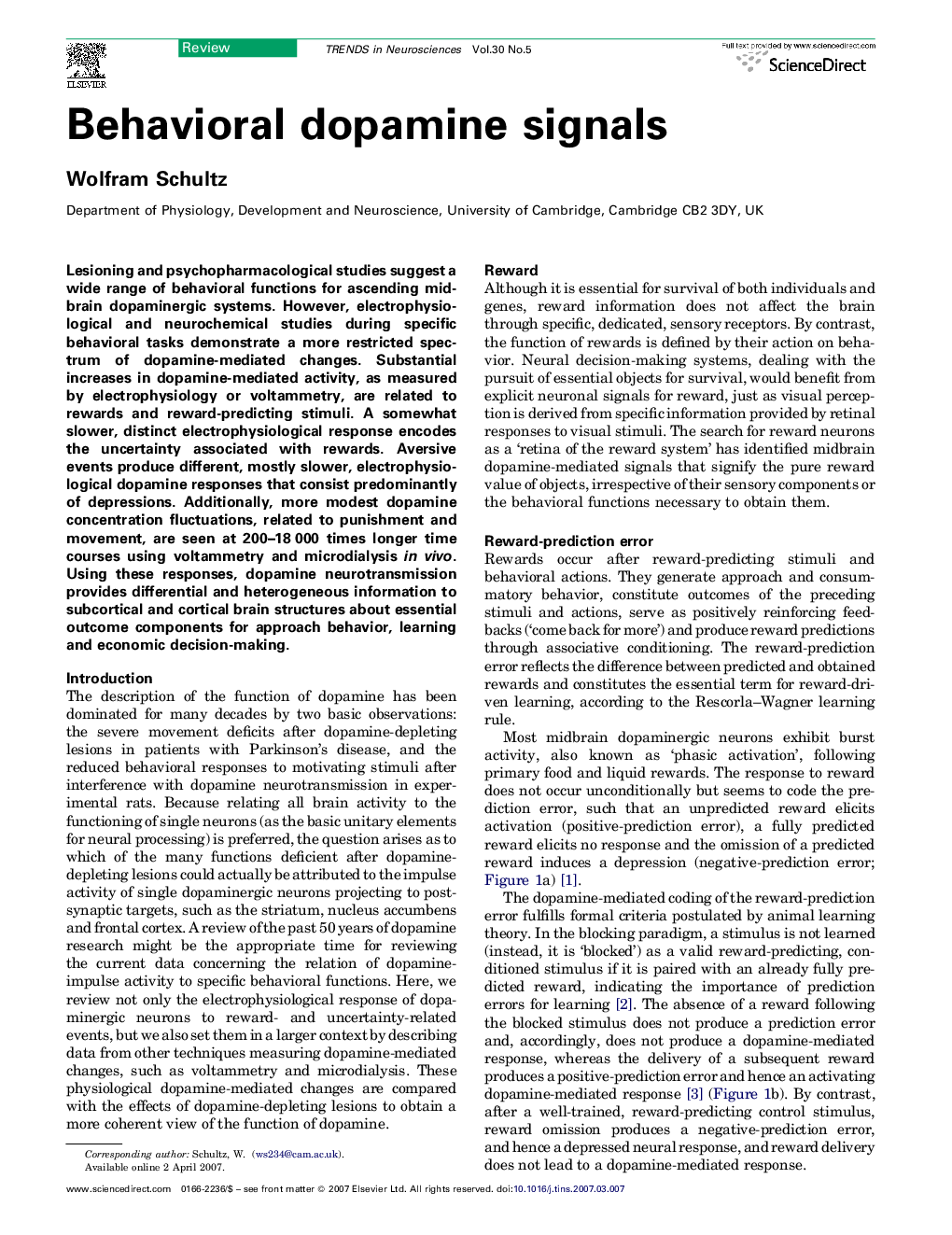| Article ID | Journal | Published Year | Pages | File Type |
|---|---|---|---|---|
| 4354992 | Trends in Neurosciences | 2007 | 8 Pages |
Lesioning and psychopharmacological studies suggest a wide range of behavioral functions for ascending midbrain dopaminergic systems. However, electrophysiological and neurochemical studies during specific behavioral tasks demonstrate a more restricted spectrum of dopamine-mediated changes. Substantial increases in dopamine-mediated activity, as measured by electrophysiology or voltammetry, are related to rewards and reward-predicting stimuli. A somewhat slower, distinct electrophysiological response encodes the uncertainty associated with rewards. Aversive events produce different, mostly slower, electrophysiological dopamine responses that consist predominantly of depressions. Additionally, more modest dopamine concentration fluctuations, related to punishment and movement, are seen at 200–18 000 times longer time courses using voltammetry and microdialysis in vivo. Using these responses, dopamine neurotransmission provides differential and heterogeneous information to subcortical and cortical brain structures about essential outcome components for approach behavior, learning and economic decision-making.
